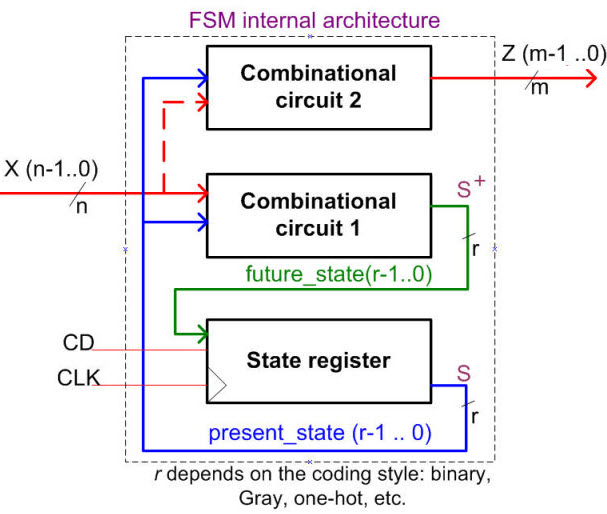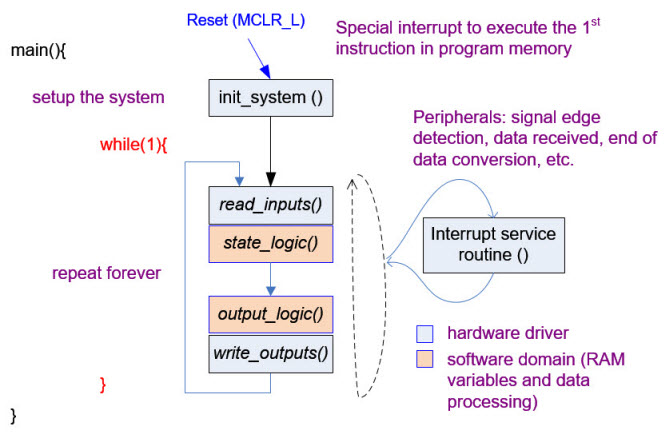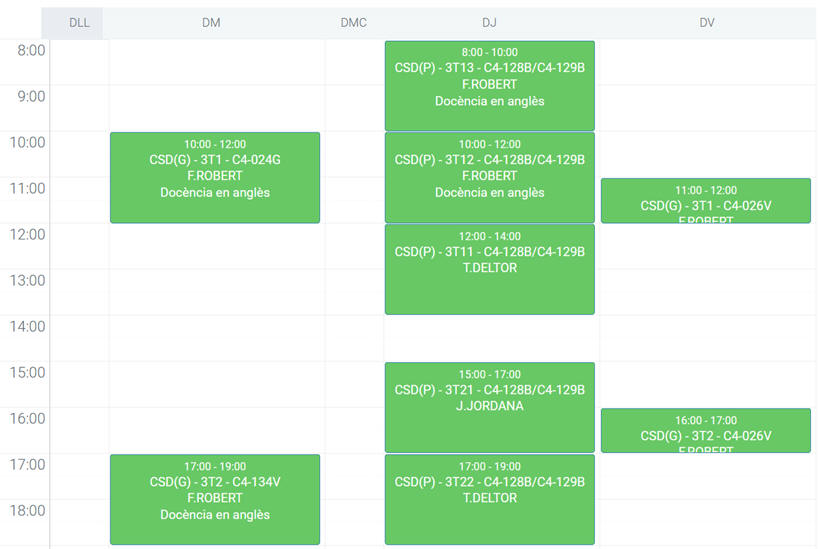Lectures and labs |
| Chapter 1: Combinational circuits | ||||||||||||||||
| W1 | L1.1 | L1.2 | L1.3 | L1.4 | L1.5 | |||||||||||
| W2 | L1.6 | L2.1 | LAB1.1 | L2.2 | PLA1.1 | |||||||||||
| W3 | L2.3 | L2.4 | LAB1.2 | L2.5 | PLA1.1 | PLA1.2 | ||||||||||
| W4 | L3.1 | L3.2 | LAB2 | L3.3 | PLA1.2 | PLA2 | ||||||||||
| W5 | L4.1 | L4.2 | LAB3 | L4.3 | PLA2 | PLA3 | ||||||||||
| W6 | LAB4.1 | PLA3 | PLA4.1 | |||||||||||||
| W7 | LAB4.2 | AR1 | PLA4.1 | PLA4.2 | Q1-4 | |||||||||||
Midterm exam |
Chapter 1 | |||||||||||||||
| W8 | PLA4.2 | |||||||||||||||
 |
Fig. 1. Symbol of a generalised combinational circuit. This block is described by its truth table or the equivalent canonical equations product of maxterms or sum of minterms. |
| Due dates for P_Ch1 post laboratory assigments after having practised in lectures and lab sessions: | ||||||||||||||||
| PLA1.1 | Due date September 26 | Circuit analysis using Proteus (method II) and Wolfram Alpha (method IV) | Q & A | |||||||||||||
| PLA1.2 | October 3 | Circuit analysis using VHDL tools (method III) | ||||||||||||||
| PLA2 | October 10 | Circuit design using single-VHDL file plan A and plan B | ||||||||||||||
| PLA3 | October 20 | Circuit design using multiple-file hierarchical plan C2 | ||||||||||||||
| PLA4.1 | October 24 | Gate level measurements: how fast is a circuit operating? | ||||||||||||||
| PLA4.2 | November 14 | Laboratory prototype FPGA + PCB + measurements | ||||||||||||||
| Chapter 2: Sequential systems | ||||||||||||||||
| W6 | L5.1 | L5.2 | L5.3 | |||||||||||||
| W7 | L5.4 | L6.1 | ||||||||||||||
| W8 | L6.2 | |||||||||||||||
| W9 | L7.1 | L7.2 | LAB6 | L7.3 | PLA6_7 | |||||||||||
| W10 | L8.1 | L8.2 | LAB7 | PLA6_7 | ||||||||||||
 |
Fig. 2. Internal architecture of a synchronous canonical finite state machine as studied in CSD. The state register contains a bank of r D_FF memory cells. r depends on state coding style selected. The FSM, even if structured internally in three blocks, is implemented in a single VHDL file with processes instead of components (the only time where plan C1 is used in CSD). |
| Due dates for P_Ch2 post laboratory assigments after having practised in lectures and lab sessions: | ||||||||||||||||||||||||
| PLA6_7 | December 1 | Designing FSM, datapath and dedicated processors | Q & A | |||||||||||||||||||||
| Chapter 3: Microcontrollers | ||||||||||||||||
| W10 | L9.1 | |||||||||||||||
| W11 | L9.2 | L9.3 | LAB9 | PLA9 | Q5-8 | |||||||||||
| W12 | L9.4 | L10.1 | LAB10 | L10.2 | ||||||||||||
| W13 | L11 | L12.1 | LAB11 | L12.2 | PLA9 | PLA10_11 | ||||||||||
| W14 | L12.3 | AR2 | AR3 | Q9-12 | ||||||||||||
| W15 | PLA10_11 | |||||||||||||||
Final exam |
Chapter 2 |
Chapter 3 |
||||||||||||||
 |
Fig. 3. The key concept in Chapter 3 is adapting the FSM structure to software environment in C language. Our programming style and code organisation will mimic concepts studied in previous chapters. |
| Due dates for P_Ch3 post laboratory assigments after having practised in lectures and lab sessions: | ||||||||||||||||||||||||
| PLA9 | Due date December 12 | Microcontroller. Basic digital I/O pins | ||||||||||||||||||||||
| PLA10_11 | January 12 | Phase #1: Adapting FSM to μC, interrupts; #2: LCD; #3: TMR | Q&A | |||||||||||||||||||||
Key note: PLA3, PLA6_7 and PLA10_11 are group online submissions at the Atenea platform. Only materials submitted before due dates are considered for grading. To avoid any problems with file types or sizes, please, do not wait until the last minute. And be sure that your files can be downloaded and unzipped correctly and also that you include a valid link to your video presentation. Add as well your own self-assessment indicating what grade you might get with respect to the marking grid.
Current term classes and laboratory sessions:



